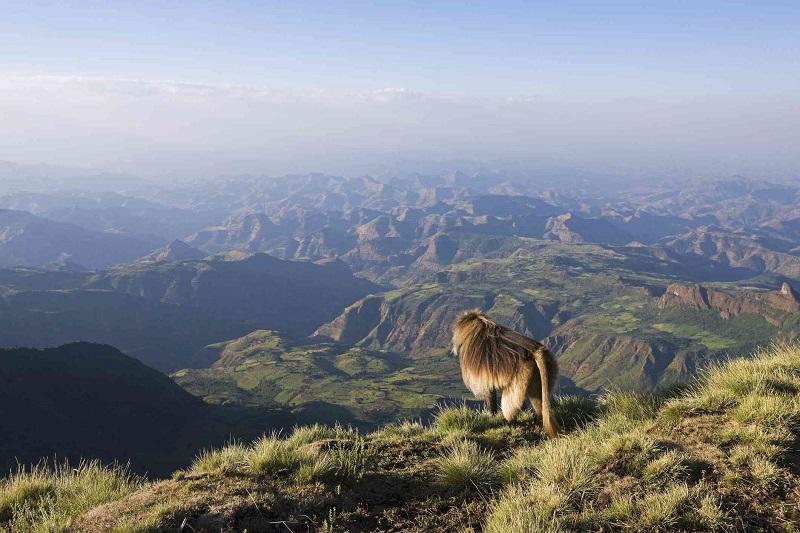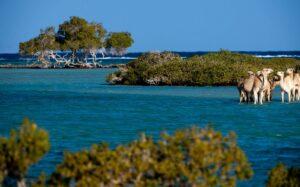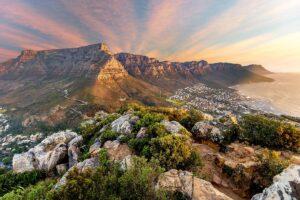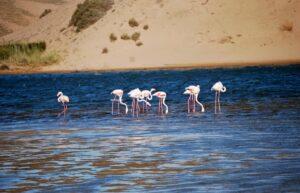Located in northern Ethiopia, Simien National Park is one of Africa’s most dramatic and breathtaking landscapes. Known for its rugged mountain terrain, deep valleys, and towering peaks, the park offers a unique and awe-inspiring experience for visitors.
Covering an area of roughly 220 square kilometers, the Simien Mountains are home to some of the highest peaks in Africa, including Ras Dashen, the highest point in Ethiopia.
The park is not only a haven for trekkers and adventure seekers but also a UNESCO World Heritage Site, recognized for its exceptional natural beauty and biodiversity. This guide will take you through the wonders of Simien Mountains National Park, from its diverse wildlife to the best times to visit and everything in between.
Please Download Our App from the Android or Apple Store.
Overview of Simien Mountains National Park
Simien Mountains National Park was established in 1969 and became a UNESCO World Heritage Site in 1978 due to its outstanding universal value. The park is located in the Amhara region, about 120 kilometers northeast of Gondar, and is part of the larger Simien Mountains range, which extends for hundreds of kilometers across the Ethiopian Highlands. The park’s landscape is characterized by its jagged mountain peaks, deep gorges, and high-altitude plateaus, creating a dramatic backdrop for any adventure.
The Simien Mountains are known for their unique geological formations, which have been shaped over millions of years by volcanic activity and erosion. The result is a stunning landscape of steep cliffs, pinnacles, and valleys that offer some of the most spectacular scenery in Africa.
The park’s highest peak, Ras Dashen, stands at 4,550 meters and is the fourth-highest mountain in Africa. Trekking to the summit of Ras Dashen is a challenging yet rewarding experience, offering panoramic views of the surrounding landscape.
Simien Mountains National Park is home to a rich cultural heritage. The local communities, predominantly the Amhara people, have lived in the region for centuries, maintaining their traditional way of life. The park also has historical significance, with ancient rock-hewn churches and monasteries dotting the landscape, adding a cultural dimension to the natural wonders of the park.
Wildlife in Simien Mountains National Park
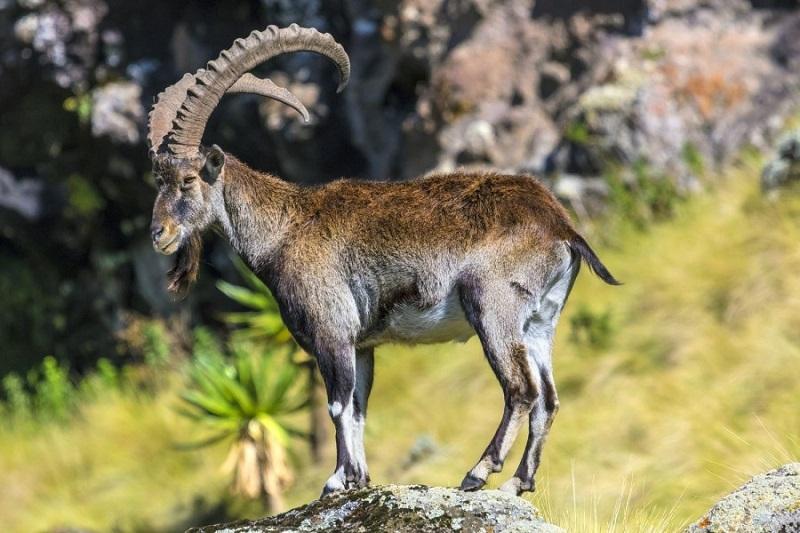
Simien Mountains National Park is renowned for its unique and diverse wildlife, much of which is endemic to Ethiopia. The park is home to several rare and endangered species, making it a key conservation area in Africa. One of the most iconic species in the park is the Gelada baboon, often referred to as the “bleeding-heart monkey” due to the distinctive red patch on its chest.
These primates are found only in the Ethiopian Highlands, and Simien Mountains National Park offers one of the best opportunities to observe them in their natural habitat. Another highlight of the park’s wildlife is the Ethiopian wolf, the rarest canid in the world. With only a few hundred individuals remaining, the Ethiopian wolf is critically endangered and can be challenging to spot, but sightings are possible in the higher-altitude areas of the park.
The Walia ibex, an endangered species of wild goat, is another endemic animal that calls the Simien Mountains home. These sure-footed creatures are often seen navigating the steep cliffs and rocky outcrops of the park. The park’s birdlife is equally impressive, with over 180 species recorded, including several endemics.
Birdwatchers can look forward to spotting the thick-billed raven, the lammergeier (bearded vulture), and the Ethiopian black-headed oriole, among others. The park’s diverse habitats, ranging from high-altitude grasslands to montane forests, support a wide variety of avian species, making it a birdwatcher’s paradise.
Simien Mountains are home to several species of reptiles, amphibians, and insects, many of which are adapted to the park’s unique environment. The combination of high-altitude habitats and isolation has led to a high degree of endemism, making the park a vital area for biodiversity conservation.
The Best Time to Visit Simien Mountains National Park
The best time to visit Simien Mountains National Park is during the dry season, which runs from October to March. During these months, the weather is relatively mild, with clear skies and cooler temperatures, making it ideal for trekking and outdoor activities. The dry season also offers the best visibility for enjoying the park’s stunning landscapes and spotting wildlife.
The wet season, from June to September, brings heavy rains to the region, which can make trekking more challenging due to muddy trails and slippery conditions. However, the park’s vegetation is lush and green during this time, and the waterfalls are at their most spectacular. For those who don’t mind the rain, the wet season can offer a more serene and less crowded experience in the park.
April and May are considered the shoulder months, with less rainfall than the peak wet season but still more greenery than the dry season. These months can also be a good time to visit if you prefer fewer crowds and a mix of dry and wet conditions.
Getting to Simien Mountains National Park from Gondar

Simien Mountains National Park is located about 120 kilometers northeast of Gondar, a city in northern Ethiopia that serves as the main gateway to the park. The drive from Gondar to the park takes about 3 to 4 hours, depending on road conditions. The route passes through scenic highland terrain, offering beautiful views of the Ethiopian countryside along the way.
The road from Gondar to Debark, the town closest to the park’s entrance, is mostly paved, but the final stretch leading into the park can be rough and may require a 4×4 vehicle, especially during the rainy season. Visitors can hire a private vehicle, join a guided tour, or use public transportation to reach Debark, where park permits and guides can be arranged.
For those flying into the region, the nearest airport is in Gondar, which has regular flights from Addis Ababa and other major cities in Ethiopia. From Gondar, transfers to Simien Mountains National Park can be easily arranged.
Other Activities in Simien Mountains National Park
Simien Mountains National Park is best known for its trekking opportunities, with a variety of trails catering to different levels of experience and fitness. The most popular trek is the multi-day hike to Ras Dashen, which takes visitors through diverse landscapes, including high-altitude plateaus, deep valleys, and remote villages. Along the way, trekkers can enjoy breathtaking views, encounter unique wildlife, and experience the hospitality of the local communities.
In addition to trekking, the park offers opportunities for wildlife viewing, birdwatching, and photography. The dramatic landscapes of the Simien Mountains provide a stunning backdrop for capturing the natural beauty of the park, and early mornings or late afternoons are the best times for photography. Cultural experiences are also a highlight of a visit to Simien Mountains National Park.
You can explore nearby villages and interact with the local Amhara people, learning about their traditional way of life, including their farming practices, crafts, and cuisine. The park’s proximity to historical sites, such as the rock-hewn churches of Lalibela and the castles of Gondar, makes it an excellent addition to a cultural tour of northern Ethiopia.
Park Fees for Simien Mountains National Park
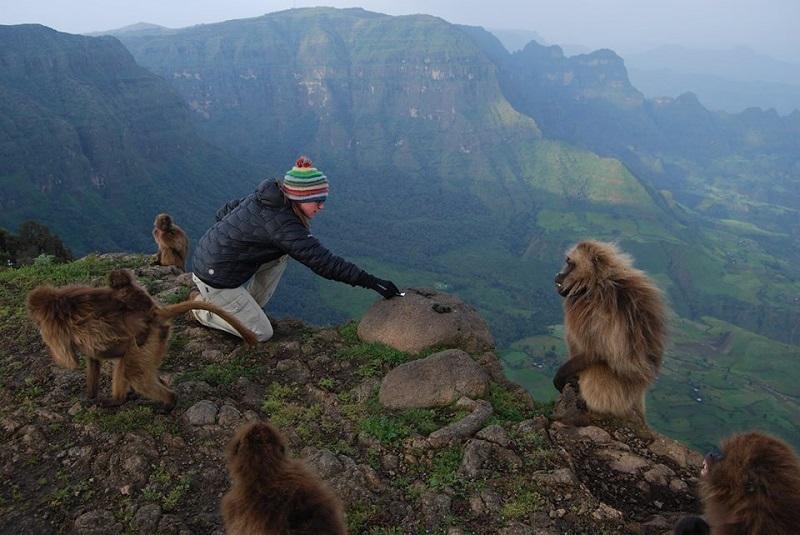
As of 2024, the entrance fees for Simien Mountains National Park are as follows:
- Non-Resident Adults: $30 per person per day
- Non-Resident Children (5-18 years): $15 per child per day
- Ethiopian Citizens and Residents Adults: ETB 100 per person per day
- Ethiopian Citizens and Residents Children (5-18 years): ETB 50 per child per day
In addition to the entrance fees, visitors are required to hire a local guide and scout for safety, especially for longer treks. The cost of hiring a guide and scout varies depending on the duration and complexity of the trek. It is advisable to arrange these services in advance through a reputable tour operator or at the park’s headquarters in Debark.
FAQs: Touring Simien Mountains National Park
Do I Need a Car to Tour the Park?
Yes, a car is necessary to explore Simien Mountains National Park, especially if you plan to visit different areas within the park or are on a tight schedule. While trekking is the primary way to experience the park, a vehicle is needed to reach the starting points of the various trails and to transport gear and supplies.
Are Unguided Walks Allowed in the Park?
Unguided walks are not recommended in Simien Mountains National Park due to the rugged terrain, high altitudes, and presence of wildlife. It is mandatory to hire a local guide and scout, especially for longer treks, to ensure safety and to provide valuable insights into the park’s natural and cultural heritage.
How Much is a Game Drive in the Park?
Simien Mountains National Park is not known for traditional game drives, as it is primarily a trekking destination. However, if you wish to explore the park by vehicle or combine trekking with wildlife viewing, it is best to arrange a customized tour through a local operator. The cost of such tours can vary widely, depending on the duration and services included.
Conclusion
Simien Mountains National Park offers a unique and unforgettable experience for nature lovers and adventurers alike. With its dramatic landscapes, diverse wildlife, and rich cultural heritage, the park is a must-visit destination in Ethiopia.
